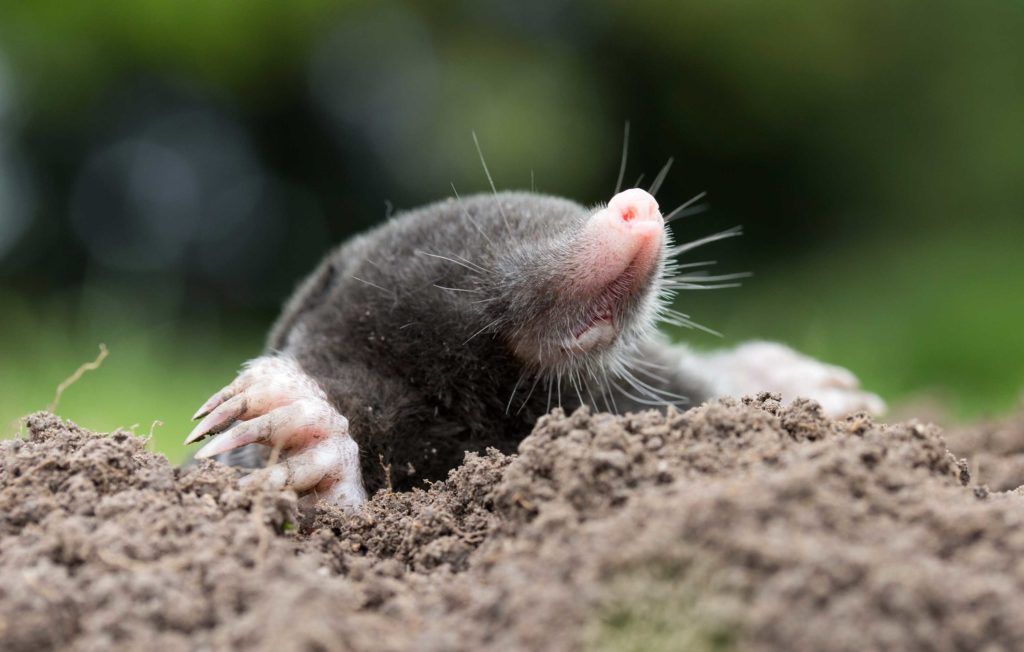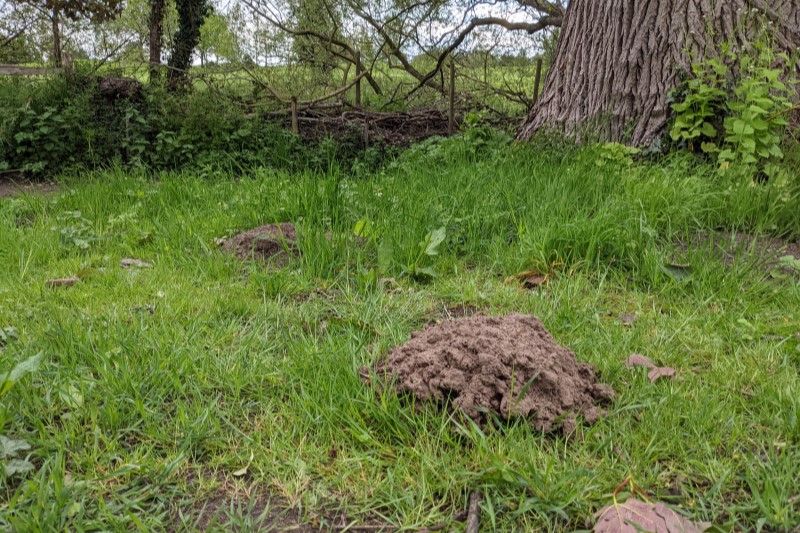Moles get an unfair press. As part of our native fauna, there’s a lot to be said for moles, and molehills are more useful than you might imagine…
Moles (Talpa europaea) are a common insectivore, akin to hedgehogs and shrews, living an almost entirely subterranean existence. Perennial stories of the mole population ‘exploding’ usually originate from mole catching associations, but the truth is that little is known about how numbers are changing. Evidence (from surveys) suggests numbers may have fallen over the past two decades.
A whole hill of molehills
Moles are only really known for one thing: molehills – excavated soil that’s pushed up to the surface. The burrow system acts as a pit-fall trap, collecting earthworms and insect larvae that fall into the tunnels and are caught by its patrolling resident before they can escape.
In shallow soil, burrows are usually on one level, but elsewhere a multi-tiered tunnel system can extend to a metre deep. Surface tunnels in soft or freshly cultivated earth are often temporary, exploratory excursions that push up ridges in the soil, particularly during the breeding season in spring. Sometimes, the raised roof of a surface run collapses, leaving an open trench. French naturalists called these traces d’amour, although it’s unlikely that they’re particularly romantic endeavours.
When prey is plentiful, moles may be inconspicuous. The existing tunnels provide enough food and there’s little need to excavate more. But when it’s scarce, or in cold weather when earthworms go down to deeper depths, it might be necessary to extend the tunnel system, turning up fresh molehills. This might be the case, but at least one study shows that reducing earthworm numbers (by encouraging an acidic soil, for example, or by mowing or grazing) gives rise to fewer molehills.
Whatever the case, it’s clear that there’s a seasonal effect, with more molehills appearing in spring and autumn than at other times.
Moles’ reputation as pests isn’t wholly deserved
In gardens, lawns tend to show the brunt of moles’ handiwork and for centuries gardeners have waged a largely fruitless war against the perpetrators. But their reputation as pests isn’t wholly deserved.

There’s no shortage of deterrents for moles, with mixed success. None win plaudits from everybody – or even a majority of users – but trapping with ‘scissor’ or ‘half-tunnel’ traps is inhumane and, in the long term, futile as neighbouring moles move into the territory.
Sonic devices, which create vibrations through the soil, and their low-tech counterparts (toy windmills, musical greeting cards, half-sunken plastic bottles, small, stampeding children) have their supporters and detractors in various measure. Putting the contributions of a pet dog or cat in mole runs probably has fewer fans – the idea being that the smell of a large predator wards off the mole’s approach. Alternatively, mothballs, garlic or elder twigs have been suggested in a similar role, and claims have been made for alliums and plants such as stinking hellebore (Hellesborus foetidus) and castor oil plant (Ricinus communis) as repellents. Not over-watering a lawn so that earthworms aren’t brought to the surface (and moles dig fewer runs) has also been suggested.
For most of us though, one or two molehills aren’t a big problem: soil heaps can be cleared away, avoiding an invasion of weeds, and damage to growing plants is only temporary. The best policy is to live with them and to put them to good use.
Most of the soil pushed up into molehills comes from beneath the seed bank (the top few inches of soil that contains dormant weed seeds) and after the birds have been at it, it is largely free of insect larvae. The textured soil is excellent for potting plants.
Moles will feed on troublesome species, such as leatherjackets (crane fly larvae), chafer larvae and wireworm (click beetle larvae), which can damage lawns, and their tunnels help to aerate the soil.
For a little inconvenience, you get a chance to see one of our least-known and most extraordinary mammals.
Get involved with our mammal watching surveys, Living with Mammals today or visit our mammal fact files to learn more about British mammals:
Header image credit iStockphoto, Video credit Brett Lamper.

